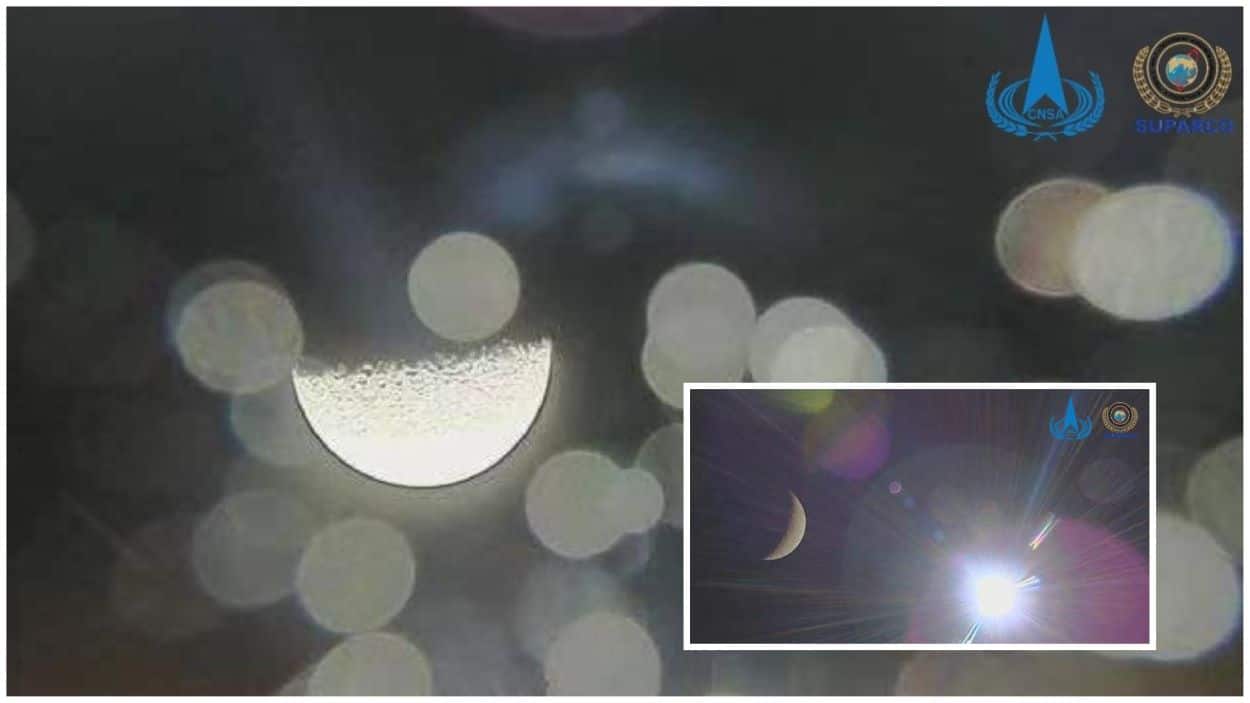Pakistan’s lunar satellite, iCube Qamar, has transmitted its first image from orbit after completing three lunar orbits.
ICUBE-Q, a satellite developed jointly by Chinese and Pakistani scientists, entered lunar orbit on May 8, 2024, and transmitted its first image back to Earth. The ground station received the groundbreaking image, marking a significant milestone in the satellite’s lunar mission.
Launched from Hainan, China, aboard China’s Chang’e-6 on May 3, the iCube Qamar satellite achieved lunar orbit by May 8. The Pakistan Space and Upper Atmosphere Research Commission (SUPARCO) confirmed this milestone.
The satellite features two cameras and captures images of the moon from 200 kilometres away.
The Institute of Space Technology (IST), in collaboration with Pakistan’s SUPARCO and China’s Shanghai University SJTU, designed and developed iCube Qamar.
Chang’e-6, part of China’s series of lunar missions, aims to land on the moon’s far side. It will collect surface samples and return them to Earth for analysis.
CubeSats are small, cube-shaped satellites known for their modular design and lightweight. They typically weigh just a few kilograms.
These satellites support a variety of missions, from Earth observation and remote sensing to communications and astronomical studies. CubeSats primarily promotes educational projects, technology development, and scientific research in space exploration.






